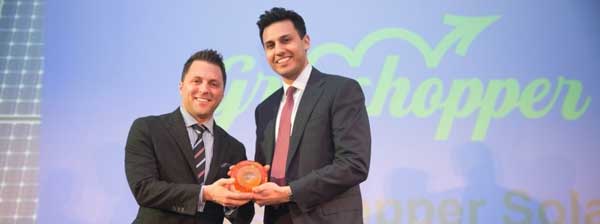We’ve all heard the news by now. Tesla, the California based company that makes electric vehicles cool and profitable has entered the energy industry by introducing its energy storage technology called the Tesla Powerwall.
The Powerwall is designed with residential solar units in mind, a piece of technology that will give owners the ability to store energy in the middle of the day at low peak usage times, and use it at night. This phenomenon could mean a new green revolution introducing a fossil-fuel-free lifestyle by which people can have solar panels on their residential properties generating electricity with the freedom to store or to use as needed.
This battery technology comes in two types: a wall-mounted solar-charged battery for residential power use and an infinitely scalable battery system for business clients with large power needs.
“The issue with existing batteries is that they suck,” Elon Musk mused during the Powerwall press conference. “Our goal here is to fundamentally change the way the world uses energy.”
If a consumer were to couple this battery technology with a solar energy system under a net metering program in the United States, this would represent enormous cost savings and provide additional options for the consumer. In theory, some Canadian provinces such as Ontario have established some sort of a net metering program; but the framework isn’t properly developed and not attractive enough to generate consumer interest.
“There is no consistent solar energy policy at the federal level,” said Azeem Qureshi, CEO of Grasshopper Solar. “In order for Canadians to benefit from such a revolutionary technology, there has to be political will to enact a net metering program across Canada.”
Grasshopper Solar operates Ontario’s largest residential solar fund, delivered through the FREE Solar program. In early 2015, the company received a Game Changer Award for Project Finance Innovation from the Canadian Solar Industries Association (CanSIA).
Through the program, Grasshopper aims to make going solar affordable and accessible for everyone.
 Azeem M. Qureshi (right) holding the 2015 Game Changer Award for Project Finance Innovation. Image Credit: CanSIA
Azeem M. Qureshi (right) holding the 2015 Game Changer Award for Project Finance Innovation. Image Credit: CanSIA
“These battery storage units from Tesla, may eventually solve a long standing setback for solar energy technology; which is storage,” Qureshi added in a statement to PVBuzz. “This means energy can be stored at high production periods of the day and used during low production periods.”
GlobalTV recently aired an interview with Qureshi; where he expressed his thoughts on Tesla’s announcement and the adaptability of this technology into the Ontario market.
GlobalTV interview with Azeem M. Qureshi, CEO of Grasshopper Solar
“I can’t say that, look, with this; things are going to change dramatically,” Qureshi told GlobalTV in the interview.”
“We currently don’t install the Tesla battery with our FREE Solar program, however, with Ontario’s transition over to an enhanced net metering program in the future, it will certainly be an option we will be able to bring to market,” added Qureshi in a statement to PVBuzz.
Data from the Ontario Ministry of Energy indicates that a typical family of four uses about 800 kWh a month, or about 27 kWh a day. This means that a single 10 kWH Powerwall could conceivably power a home for several hours (depending on what sorts of devices were being used) but is unlikely to last the whole day without limiting your electricity usage.
This may not be the deal breaker for Canadian homes but when it comes to providing backup power during power outages, and time-shifting so people can buy electricity at times of the day when it is cheap then use it at times when it is expensive, its becomes a “no-brainer”.
It also comes in very handy for people who want to go entirely off the grid with a solar system or for those with cottages by a lake or in the woods.
Critics to this technology have made statements questioning the relatively low capacity of the batteries, that some households would not be able to store enough power to run all their appliances, unless they install numerous units. Some have also stated that more competitive battery systems are already available in the market.
But these criticisms can be easily addressed, plus these available units lack the ‘cool look and feel’ of the Tesla units. But then again, until these units hit the market and performance reports start coming in, what we can do for now is wait and see.
“If Tesla’s goal is to ‘fundamentally change the way the world uses energy’ as Elon Musk stated during the Powerwall press conference, then I believe coupling this technology with the affordable solar services from Grasshopper Solar, that might just happen in Ontario,” commented Derick Ajumni, Solar Enthusiast, Founder and Editorial Manager of PVBuzz.










Comments